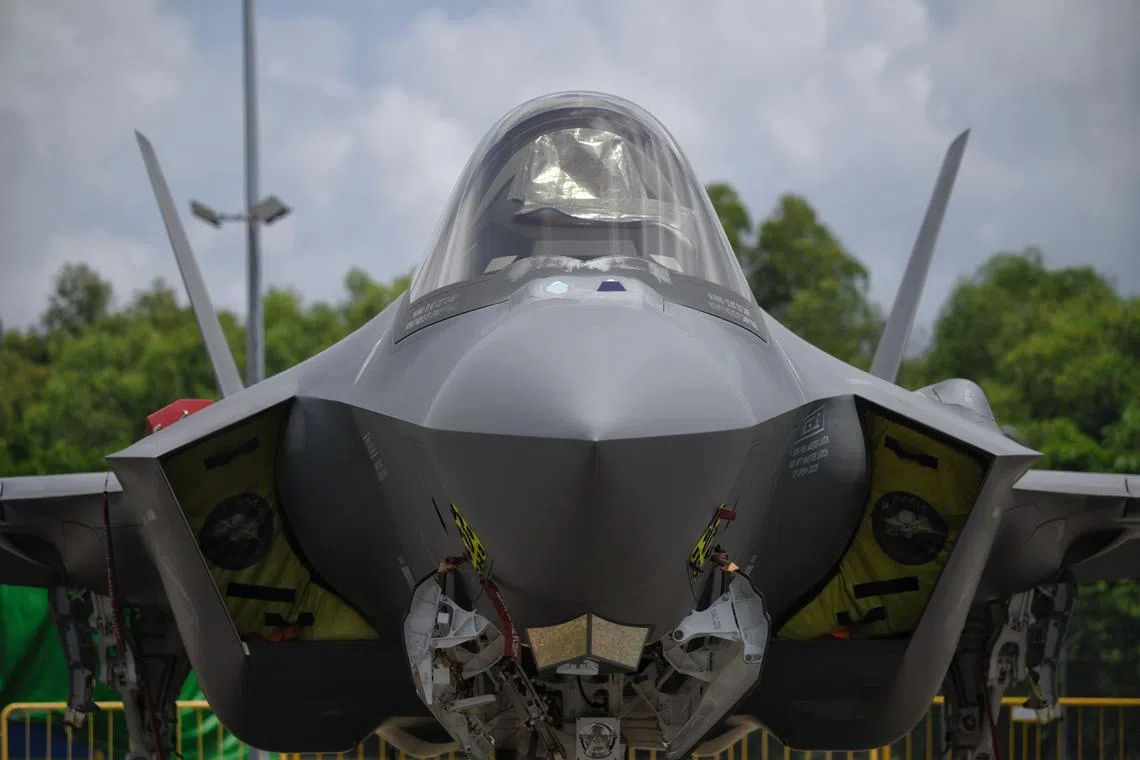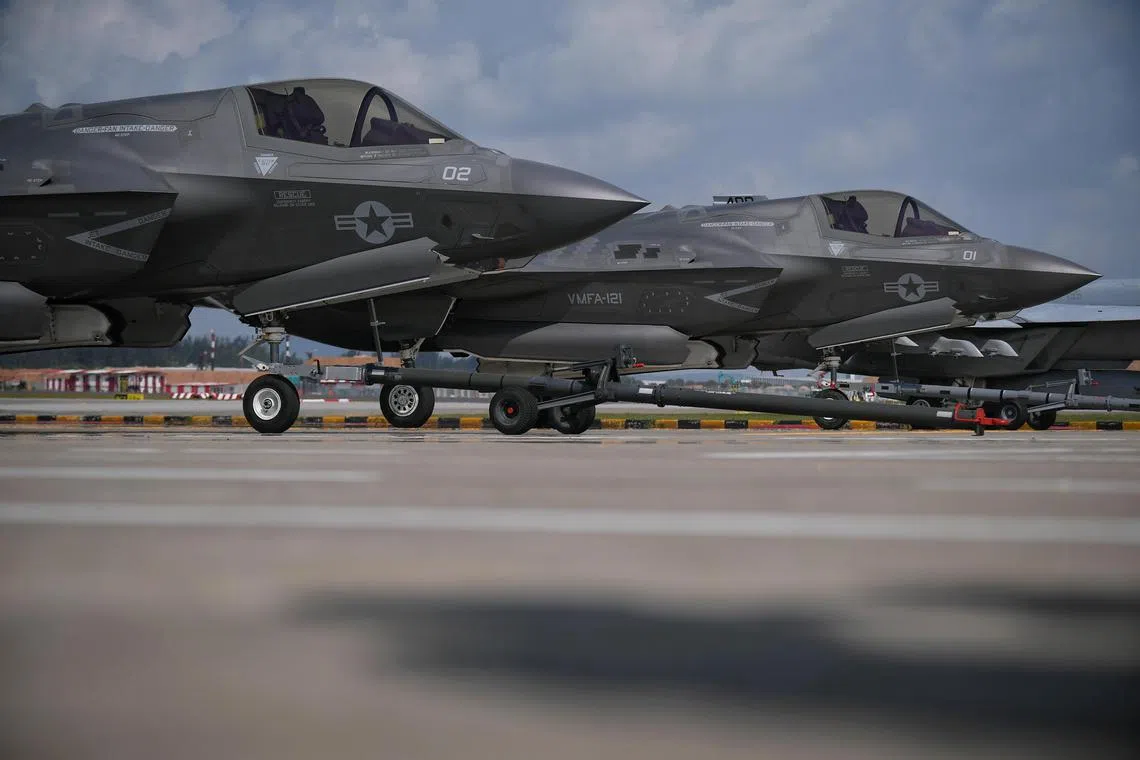News analysis
Buying F-35As will complement RSAF’s F-35Bs
Sign up now: Get ST's newsletters delivered to your inbox

The F-35A Joint Strike Fighter on display at the Singapore Airshow on Feb 21.
ST PHOTO: MARK CHEONG
Follow topic:
Singapore – The announcement by Defence Minister Ng Eng Hen that Singapore will order a second variant of the Lockheed Martin F-35 Lightning II Joint Strike Fighter means that the Republic of Singapore Air Force (RSAF) will become one of just a small handful of users to operate two variants of the fifth-generation fighter.
Eight stealth F-35As will be acquired,
He noted that the F-35A which Singapore will be buying has complementary capabilities to the F-35B short take-off/vertical landing variant already ordered.
These include the ability to carry payloads of greater capacity in its internal weapons bay and having a longer flying range, compared with the F-35Bs, which have a unique capability to take off without needing long runways and can land vertically.
Heavier weapons, lower cost
The greater internal payloads that can be carried by the F-35A include two 907kg Joint Direct Attack Munition satellite guided bombs, or a similar number of the Joint Strike Missile (JSM).
The latter is designed by Norway’s Kongsberg to fit inside the F-35A’s weapons bay and is used for long-range precision strikes against ground targets.
Carrying weapons in its internal weapons bay helps the F-35 maintain its stealthy characteristics, making it more difficult for enemy radars to detect it, and retaining its element of surprise in combat.
In contrast, the F-35B is able to carry only smaller 454kg bombs in its internal weapons bay. While it can carry the JSM on external pylons fitted on its wings, doing so significantly reduces its stealth and degrades a key advantage of the F-35. The angular pylons and weapons are not optimised for stealth, making it easier for radars to detect the F-35.
The F-35B has a smaller internal weapons bay. This is to accommodate the lift fan providing the thrust that enables it to take off on runways as short as 244m even when fully loaded and land vertically like a helicopter.
The space taken up by the lift fan is also why the F-35B can carry only 6,125kg of fuel, compared with 8,278kg for the F-35A. Correspondingly, the F-35B has a shorter flying range of 1,667km, while the F-35A can reach 2,200km.
Nevertheless, the F-35B’s unique short take-off/vertical landing capability allows the RSAF to retain the ability to generate air power in the event runways are damaged.
This is a key consideration for land-scarce Singapore, particularly with the impending closure of Paya Lebar Air Base in the 2030s.
It is also why Dr Ng said in his speech that the F-35A and the F-35B complement each other and provide the RSAF with greater operational flexibility. Together with Singapore’s existing F-15SG fighters, the RSAF can perform the full suite of missions required to defend Singapore’s skies.

The United States Marine Corp’s F-35B making its debut at the Singapore Airshow back in 2018.
PHOTO: ST FILE
The F-35A is also cheaper to acquire than the F-35B. Figures released by the US indicate that the latest production lot of F-35As cost US$82.5 million (S$111 million) for each jet, while a single F-35B costs US$109 million.
The cost of the F-35A is comparable to the Boeing F-15EX Eagle II the United States Air Force (USAF) is acquiring alongside its own F-35As. Based on figures released by the US Defence Department in October 2023, an F-15EX costs approximately US$90 million.
The F-15EX is a more advanced version of the fourth-generation F-15SG fighter jet already operated by Singapore. However, it does not have the advanced sensor fusion which helps in reducing pilot workload or the stealth characteristics of the fifth-generation F-35.
High degree of commonality
Singapore will join the US, Italy and Japan in being an operator of both F-35 variants.
One key advantage of operating both variants is the reduction in logistics burden and costs: The F-35A and F-35B share a high degree of commonality, despite their different capabilities.
There is a large pool of common airframe parts. Many of the key onboard systems such as the radar, electronic warfare suite and sensors are common to both variants.
Both variants are also powered by a similar engine. The USAF decision in 2023 not to proceed with developing a new engine for the F-35A – which the F-35B would not be able to use – would have likely figured in Mindef’s decision to proceed with the F-35A purchase.
Instead, the US military opted to upgrade the existing Pratt and Whitney F135 engine that powers the F-35, meaning that both F-35As and Bs will get the upgraded engine, ensuring continued commonality for both variants.



